
Doctor Who has a massive following in both its native Britain and around the world, with dedicated Whovians spreading their love of the show even when it has been off the air. Currently well past its 50th anniversary, Doctor Who is preparing to transition to a fourteenth official doctor. Much of what made the show so impressive, though, surrounded the first eleven doctors.
Birth of the Show
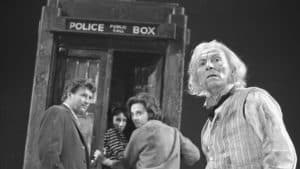
Initially, the aim of the show was almost purely educational. The TARDIS itself would take the form of an item from a different time period during each jaunt through time, with the school teacher characters serving as guides to the past. The police box appearance and adventure elements would come much later, owing largely due to budget constraints in the matter of the first and a lack of viewership in the cast of the second.
Doctor Who largely owes its existence to Sydney Newman, Verity Lambert, and David Whitaker. Over the course of the first series, many others contributed to the project. While there was some sense that Doctor Who could go on to be a successful show, it is certain that no one could have expected exactly how far the show would go.
The First Doctor
AKA The Old Doctor
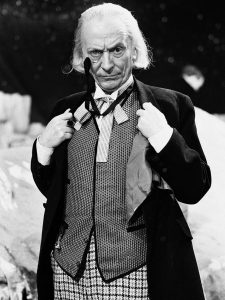
Try my AI Tabletop RPG generators...and an extensive library of content!
The First Doctor was gruff, not terribly friendly, and often border-line abusive to the people with whom he travelled. He didn’t necessarily embrace the life of adventure, having hid out on Earth for many years previously. He was entirely unlike the Doctors who would come next, yet he was perfect for the show as it was originally conceived.
This Doctor had no problem interacting with historical figures or meddling in time. He had no problem letting his Companions do the dirty work, either. He was a stern and somewhat frightening figure at times, yet was eventually beloved by the audience. If it was not for the portrayal of this Doctor, it is hard to see how the show could have succeeded.
The First Doctor’s regeneration was sudden and ultimately bittersweet. It is was not done for dramatic effect, and Hartnell was reportedly not terribly happy to have to leave the show. Still, it set the stage ofr what would become at least five decades of a hit show.
The Second Doctor
AKA The Flute Doctor
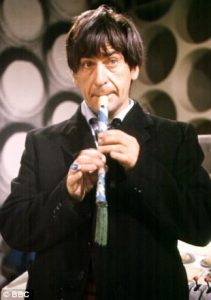
⚔️ Fantasy RPG Random Tables Books
Make life as a Gamemaster easier…
If you play Dungeons & Dragons, Pathfinder, or other fantasy RPGs, this
RPG random tables series
is packed with encounters, NPCs, treasure, and more. Available in eBook or print—either way, you’ll have a wealth of adventure ideas at your fingertips.
Where the first Doctor was gruff, the Second was whimsical. He seemed to truly enjoy spending time with his companions and his adventures tended to be a bit lighter in tone. While Cybermen were introduced under his watch, this was also the era when The Doctor could get a bit sillier. Some of the most iconic shots of the show were taken under his reign as Doctor.
The Second Doctor’s personality and sense of style directly impacted the 11th Doctor. He would also be the first Doctor to really interact with Time Lords in a significant sense. He was put on trial by his people for the first time, forced to regenerate, and eventually stranded on Earth in the 20th Century. While not the longest-service Doctor, he served as a template for a more humane and lighter-hearted Doctor.
The Third Doctor
AKA The Dandy Doctor
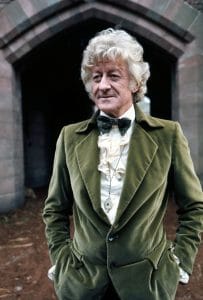
John Pertwee’s Third Doctor was a radical departure for the show. He was stuck on Earth, largely without the use of his TARDIS. He would instead work as a scientific advisor for UNIT, and his adventures would be largely terrestrial in nature. He would have a truly recurring antagonist in the Master, and he would be perhaps the best adapted Doctor to life on Earth.
This Doctor was very heavily influenced by James Bond. He used gadgets and vehicles, some of which were actually chosen by Pertwee himself. He was a more human Doctor who actually engaged in combat with some of his enemies. Though his companions were quite important, he was no longer limited to interacting with those who travelled in the TARDIS. In fact, he created a supporting cast that would pop up in many future incarnations of Doctor Who.
The Third Doctor was gotten rid of with relatively little ceremony when the show decided to change directions once again. His era stands out as an oddity in the Doctor Who universe, albeit one that had a huge amount of influence on what was to come. This era was a product of its time, yet one that would keep being referenced in future stories.
The Fourth Doctor
AKA The Scarf Doctor
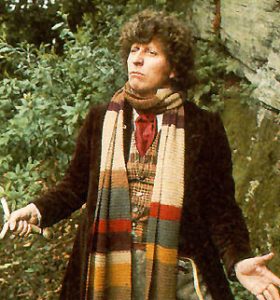
Known for his coat and impossible long scarf, the Fourth Doctor is in many ways the iconic Doctor. He was a bit silly but often stern. He was the Doctor with some of the most memorable companions, including Adric, Sara Jane Smith, K-9, and Romana.
The mythos of Doctor Who was greatly expanded during the tenure of this Doctor. With 172 episodes, there’s a very good chance that he was the first introduction to the Doctor that most viewers would have.
To this day, this is still the Doctor that most think of when they consider the earliest incarnations of Doctor Who. There are several classic stories that involve the Fourth Doctor, as well as a number of novels and audio plays that involve the same character. The Fourth Doctor has frequent visual allusions in the 12th Doctor’s era, most notably through the use of his scarf.
The Fifth Doctor
AKA The Celery Doctor

The Fifth Doctor was a younger and somewhat more adventurous Doctor than his past incarnations. He initially journeyed with Adric, Nyssa, and Tegan, though Adric’s death came relatively soon into the Fifth Doctor’s run. The Fifth Doctor dropped much of the humor and horror from previous runs, once again bringing in a bit of scientific accuracy to the show.
⚔️ Fantasy RPG Random Tables Books
Make life as a Gamemaster easier…
If you play Dungeons & Dragons, Pathfinder, or other fantasy RPGs, this
RPG random tables series
is packed with encounters, NPCs, treasure, and more. Available in eBook or print—either way, you’ll have a wealth of adventure ideas at your fingertips.
The Fifth Doctor would inhabit the role for sixty-nine episodes, and would eventually become one of the longer-reigning Doctors. Many of the classic Time Lord enemies would recur during this time period, and in many ways these episodes would set up the formula followed in the revival of Doctor Who.
The Fifth Doctor would return and encounter the Tenth Doctor in a charity special. The two would interact and the Tenth would gush about how much he enjoyed being the Fifth Doctor. While his tenure was brief compared to the Fourth Doctor, he still made a huge impact on the show. Many of the elements of the Fifth Doctor would go on to become iconic elements of the Doctor.
The Sixth Doctor
AKA The Cat Lapel Doctor
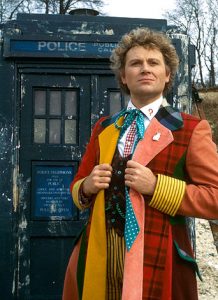
The Sixth Doctor is perhaps best known for the Trial of the Timelord serial. He was put on trial for a second time by his own people, and put on trial by the Valeyard. It was eventually revealed that the Valeyard was a secret, future regeneration of the Doctor who actually wanted to steal his past self’s regenerations.
During his tenure, the Sixth Doctor found himself battling many classic foes. Many of his adventures involved older properties, largely owing to the lack of overall interest in many of the newer Doctor’s stories. The show was put on a year and a half hiatus during the Sixth Doctor’s tenure, with his reappearance only set up so that the Seventh Doctor could take over. Still, the Sixth Doctor had many adventures in books and in radio plays, where his problematic reputation was rehabilitated to a remarkable degree.
The Seventh Doctor
AKA The Umbrella Doctor
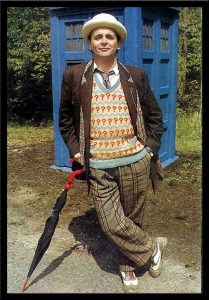
Forced to regenerate after an attack by the Rani, the Seventh Doctor entered into the world confused but ultimately heroic. He adventured first with the Sixth Doctor’s companion Mel, and then would go on to have adventurers with Ace. He was initially quite light-hearted and fun, but was revealed to have a dark side as the series went on.
The Seventh Doctor perished on Earth. He had attempted to return the remains of The Master to Gallifrey, but the Master’s remains caused the Tardis to land in San Francisco in 1999. The 7th Doctor died after human doctors mistook his double heartbeat for a medical condition and accidentally caused his death on the operating table. His image was seen several times in flashback in the new series. He was the last Doctor before the lengthy cancellation of the show.
The Eighth Doctor
AKA The American Doctor
Played by Paul McGann, this Doctor only had a single appearance on television. He appeared in the failed American Doctor Who TV movie, regenerating from the 7th Doctor after the former was killed in a shootout in the United States. He had a brief adventure, fought a largely unrecognizable version of The Master, and was largely ignored by the series that came after his adventure.
Try my AI Tabletop RPG generators...and an extensive library of content!
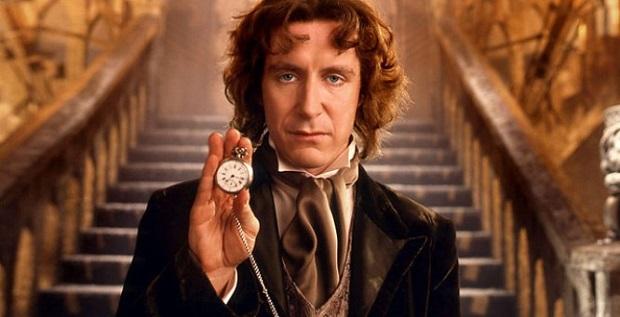
The Eighth Doctor has something of a mixed reputation among fans. On one hand, his performance was very well regarded by fans of the show. He was an enigmatic and entertaining Doctor, and he could have easily fit into the continuity of the show. He did, however, introduce some unfortunate tangles into the continuity of the series, though, so some fans try to avoid his single appearance.
The Eighth Doctor appeared mostly in novels and in radio plays. In those media, his story was fleshed out and he was considered a successful Doctor. The Eight Doctor did not appear again until just before the 50th Anniversary special, at which time he was revealed to have purposefully regenerated into the War Doctor. Mcgann reprised the role for the brief teaser, which helped to reinvigorate interest in the 8th Doctor.
The Ninth Doctor
AKA The Leather Coat Doctor

The Ninth Doctor was the last of his kind, the last survivor of the Time War between the Daleks and Time Lord. His series was largely marked by a turn towards new antagonists.
Daleks, for example, only really showed up in the episode title of the same name and in the finale of the series. The show attempted to clean away most of the older continuity, but didn’t exactly get rid of it. Instead, the older versions of the show were quietly ignored when they weren’t relevant.
The Ninth Doctor was short-lived, with only a single series under his belt. He regenerated after looking into the Heart of the Tardis, turning into the 10th Doctor. The actor left the series due to disputes with the BBC and with the show-runners. He was initially tagged to be in the 50th Anniversary, but the scheduling did not work out.
The Tenth Doctor
AKA The New Doctor
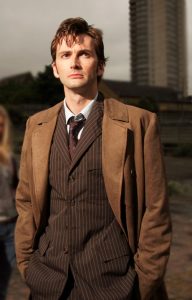
The 10th Doctor would fight classic villains like the Cybermen, Daleks, and Sontarans, but he would also introduce new threats like the Weeping Angels. He was accompanied by Rose, Martha Jones, and Donna Noble in his travels. This Doctor lasted for three seasons and a number of specials, before eventually leaving the show in the hands of the 11th Doctor. He would make one final appearance as the Doctor in the 50th Anniversary special.
The 10th Doctor also reintroduced The Master to the continuity of the show, and he would go on to become a major force during the runs of the 10th and 12th Doctors. This run was known for being highly energetic and for ratcheting up the relationship drama. This was the series that broke the unwritten no-hugging/no-kissing rules for the Doctor.
As of the tenure of the 12th, the 10th Doctor is the longest-reigning Doctor of modern era.
The Eleventh Doctor
AKA The Fez Doctor
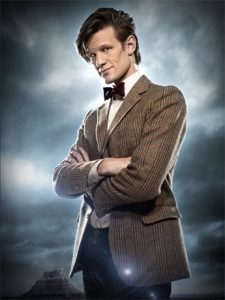
Amelia Pond nicknames him “the Raggedy Doctor” because he’s stuck in the 10th Doctor’s clothes most of his first episode, but as fans got to know the latest incarnation of their beloved time traveler, something magic happened. Yes, I’m talking about the fez.
While the running joke about the strange hat wasn’t constantly present, it tied the essence of his portrayal of the Doctor. His quick-paced delivery of lines, odd sense of humor, and energy brought something new to the show that had been missing for quite some time.
Some people loved Smith’s Doctor Who while others were more “meh” about him and the rest of the show. One thing fans and haters can agree on is that the fez somehow encapsulated the magic, humor, and mystery of Doctor Who in a single article of clothing, although not to the extent of Tom Baker’s scarf.
The Twelvth Doctor
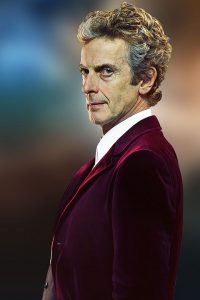
Scottish actor Peter Capaldi brought back a bit of the First Doctor mixed along with all the others. As his seasons have developed, he’s gone from a grumpy, old man to more of a whimsical yet serious version of himself. One thing’s for sure – he’s still got plenty of adventure to get himself mixed up in.
⚔️ Fantasy RPG Random Tables Books
Make life as a Gamemaster easier…
If you play Dungeons & Dragons, Pathfinder, or other fantasy RPGs, this
RPG random tables series
is packed with encounters, NPCs, treasure, and more. Available in eBook or print—either way, you’ll have a wealth of adventure ideas at your fingertips.
Capaldi appeared briefly at the end of Doctor Who’s 50th anniversary special “The Day of the Doctor” (2013), but his first official appearance came at the end of the 2013 Christmas special “The Time of the Doctor.” Fans around the globe weren’t sure what to expect with the curmudgeonly Doctor.
In January 2017, Capaldi announced the 10th season of the new Doctor Who series (post 2005) would be his last. As to who’s going to replace the old man that’s grown on a lot of people, that’s up to speculation at this point. Could it be a woman? The Master has had a sex change.
Were they testing reactions for the first female Doctor Who?
The war doctor
AKA The Famous Doctor
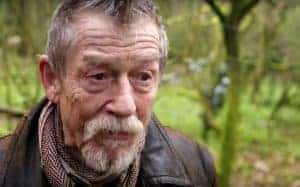
Played by John Hurt, the War Doctor’s existence was not revealed until the tenure of the 11th Doctor. His reveal came just before the 50th anniversary, and his existence was a huge part of the plot that motivated the 50th Anniversary special.
The War Doctor was a regeneration of the 8th Doctor, a regeneration purposefully undertaken during the Time War. He was not considered a ‘true’ regeneration of the Doctor, though he would eventually be counted among the total. This was the Doctor who was ultimately responsible for the end of the Time War, and who would eventually regenerate into the 9th Doctor.
Movie About the Show
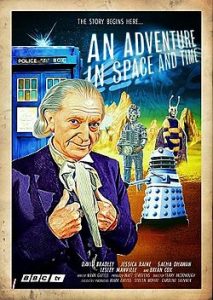
It told the story not only of how the show came into existence, but the fights that occurred to make the show something special. Thanks to the timing, it introduced many new viewers to the First Doctor and the history of the show.
Tremendously well-regarded, it helped to spark more interest in the Classic Doctor stories. It was considered remarkably accurate to the time, with several surviving members of the cast and crew (and their descendants) speaking very fondly of the film.
Who is Your Favorite Doctor?
We’ll have more Doctor Who themed content coming in the future, but for now, we invite you to the LitRPG Forum thread where people name their favorite doctors. You can see it derail rather quickly!
Whovians Welcome at LitRPG Forum!











